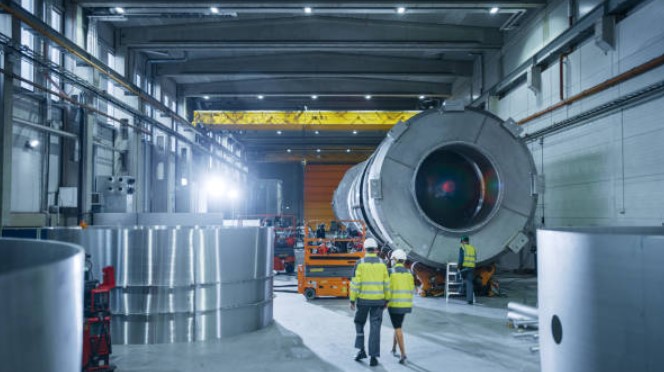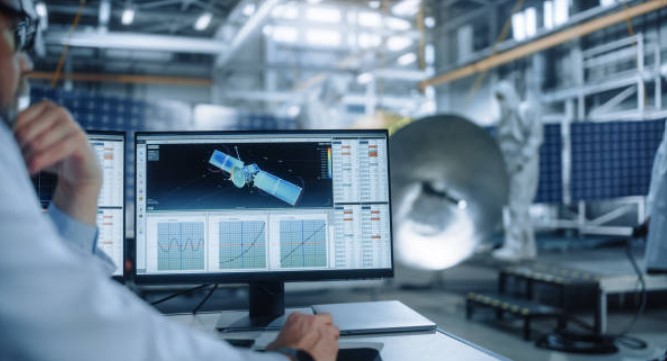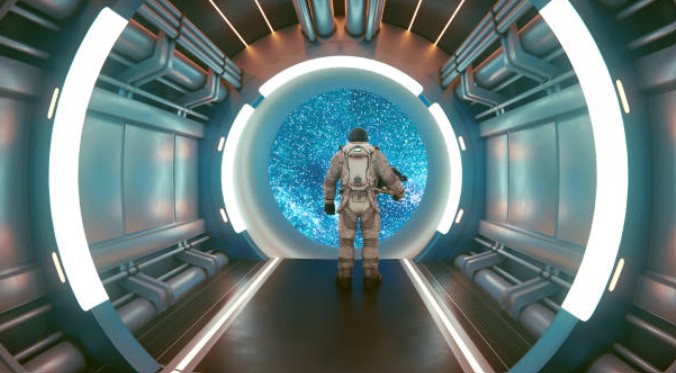Introduction
Space Engineers is a dynamic sandbox game that blends creativity, engineering, and survival mechanics, allowing players to design, build, and operate spacecraft, space stations, and planetary bases. One of the most integral aspects of gameplay is the Space Engineers G Menu Definition and Subtypes, a crucial interface that enhances efficiency when managing blocks, tools, and in-game systems.
Stay here more latest update: Homeworkify
The G Menu is far more than a simple inventory—it is a comprehensive control panel that categorizes components, streamlining the construction process and allowing players to optimize their creations. Whether you are assembling a massive space station, configuring weapon systems, or setting up automation, mastering the Space Engineers G Menu Definition and Subtypes is essential for efficient gameplay.
This guide provides an in-depth exploration of the Space Engineers G Menu Definition and Subtypes, breaking down its structure, functions, and benefits to help both beginners and experienced players enhance their building efficiency.
Table of Contents
What is the Space Engineers G Menu?
The G Menu (short for Group Menu) is a fundamental feature in Space Engineers that serves as the gateway to various in-game components, including functional blocks, tools, and control options. By pressing the “G” key, players can access this menu, which organizes building elements in a structured way to facilitate smooth gameplay.
Key Functions of the G Menu
- Organized Block Selection – The Space Engineers G Menu Definition and Subtypes help players efficiently locate and place different blocks, reducing construction time.
- Quick Access to Tools – Players can manage hand tools, weapons, and other essential gameplay elements within the G Menu.
- Customization & Hotbar Management – The menu allows the configuration of custom toolbars for quick access during gameplay.
- Grouping & Automation – Players can create block groups to automate specific tasks, improving efficiency in large builds.
By leveraging the Space Engineers G Menu Definition and Subtypes, players can ensure that their construction projects remain well-organized, making even the most complex structures easier to manage.
Space Engineers G Menu Definition and Subtypes
The Space Engineers G Menu Definition and Subtypes structure is designed to categorize and streamline various in-game components. Below, we break down its key subtypes:
1. Basic Blocks Subtype
This category includes foundational building elements such as armor blocks, landing gear, and essential structural components used in constructing ships, stations, and bases.
2. Power & Energy Systems Subtype
Managing power efficiently is critical in Space Engineers. The G Menu provides access to generators, reactors, batteries, and solar panels, allowing players to build efficient energy systems for their creations.
3. Propulsion Systems Subtype
Thrusters, gyroscopes, and wheels fall under this category, helping players control movement in space or on planetary surfaces. The Space Engineers G Menu Definition and Subtypes ensures these elements are easily accessible for precise maneuverability.
4. Weapons & Defense Subtype
From turrets to missile launchers, this section of the G Menu contains defensive and offensive components to equip spacecraft and stations with protective capabilities.
5. Control & Automation Subtype
This category includes programmable blocks, timers, and sensors that enhance automation, allowing players to create advanced systems and streamline operations in the game.
6. Production & Resource Management Subtype
Refineries, assemblers, and cargo containers are grouped here, helping players manage resources and craft necessary materials for construction.
Why Mastering the Space Engineers G Menu Definition and Subtypes is Essential
Understanding the Space Engineers G Menu Definition and Subtypes is critical for optimizing gameplay. Here’s why:
- Efficiency Boost – Navigating the G Menu effectively reduces downtime, ensuring that players can focus on building rather than searching for blocks.
- Better Organization – Proper grouping and customization allow for quicker access to essential tools and components.
- Improved Gameplay Flow – A well-managed G Menu enhances automation and control, making complex builds easier to handle.
By mastering the Space Engineers G Menu Definition and Subtypes, players can transform their gaming experience, unlocking advanced building strategies and improving overall efficiency.
Space Engineers G Menu Definition and Subtypes Breakdown
The G Menu is divided into multiple subtypes, each serving a unique function in the construction process. Understanding these subtypes allows players to build more efficiently and utilize in-game mechanics to their full potential.
1. Basic Blocks Subtype
Basic Blocks are the foundation of construction in Space Engineers. These components form the structural framework for ships, stations, and bases. They include simple cubes, beams, and panels, making them the building blocks for all creations.
2. Functional Blocks Subtype
Functional Blocks add utility and operation to structures. This category includes:
- Reactors and Batteries – Essential for power generation.
- Thrusters – Enable movement in space and planetary environments.
- Gyroscopes – Control ship orientation and rotation.
Mastering functional blocks is crucial for ensuring your designs are not only stable but also fully operational.
3. Armor Blocks Subtype
Armor Blocks provide protection and durability, shielding ships and stations from external threats. These blocks come in different variations:
- Light Armor – Suitable for lightweight builds.
- Heavy Armor – Offers maximum defense against damage.
- Decorative Armor – Enhances aesthetics while adding some protection.
Using the right armor block ensures your spacecraft or station remains resilient in hostile environments.
4. Interior Blocks Subtype
Interior Blocks transform empty structures into livable and functional spaces. These include:
- Seats & Control Panels – For pilot operation.
- Lighting & Windows – To improve visibility and design aesthetics.
- Decorative Elements – Enhance realism and immersion.
Properly utilizing interior blocks improves both the appearance and functionality of your builds.
How the Space Engineers G Menu Works
The Space Engineers G Menu Definition and Subtypes ensure that players can navigate construction elements seamlessly. When players open the G Menu, they encounter categorized components such as:
- Blocks – Primary building materials.
- Tools – Equipment for modification and construction.
- Weapons – Offensive and defensive systems.
- Power – Energy sources like reactors and batteries.
- Functional Blocks – Specialized components for automation and movement.
Players can simply click, drag, and place components into their builds without interrupting gameplay. This system eliminates the need for tedious searching, allowing for effortless construction and real-time modifications.
Importance of Understanding the Space Engineers G Menu Definition and Subtypes
Mastering the Space Engineers G Menu Definition and Subtypes significantly enhances gameplay by:
- Boosting Efficiency – Quickly locating necessary components saves time.
- Enhancing Organization – Subtypes categorize elements logically.
- Streamlining Automation – Easily configure advanced systems.
By fully understanding how to navigate and utilize the G Menu, players can take their engineering skills to the next level, leading to faster builds, better designs, and a more immersive gaming experience.
Key Features of the Space Engineers G Menu
The Space Engineers G Menu Definition and Subtypes provide an intuitive interface that simplifies construction and automation. Here are the essential features that make it an indispensable tool:
- Search Function – Quickly locate specific blocks by typing relevant keywords.
- Block Categories – Blocks are systematically organized for easy navigation.
- Drag-and-Drop Interface – Easily move blocks into the toolbar for quick access.
- Custom Toolbar Configuration – Players can personalize their toolbar for efficient building.
By leveraging these features, players can significantly streamline the construction and design process in the game.
Comprehensive Overview of G Menu Block Categories and Their Uses
The G Menu classifies building components into structured categories, each serving a distinct purpose. Understanding these categories helps players construct efficient, well-designed ships and stations.
1. Structural Blocks
Structural Blocks provide the foundation for spacecraft, stations, and planetary bases. These essential components ensure stability and durability, making them critical in any build.
2. Functional Blocks
Functional Blocks bring utility and performance to designs. This category includes:
- Power Sources (Reactors, Batteries, Solar Panels)
- Thrusters and Propulsion Systems
- Gyroscopes for Orientation Control
3. Armor Blocks
Armor Blocks are used for defense and durability, protecting ships from damage. They include:
- Light Armor (lightweight, minimal protection)
- Heavy Armor (stronger resistance against impacts and attacks)
4. Interior Blocks
Interior Blocks improve the aesthetics and usability of builds. This includes:
- Consoles and Control Panels
- Seats and Living Quarters
- Windows and Lighting Systems
5. Weapons and Defense
This category contains combat-related components, such as:
- Turrets and Cannons for automated or manual targeting
- Missile Launchers for long-range attacks
- Shield Generators for added protection
By mastering these block categories, players can optimize both functionality and design, ensuring their builds are both effective and visually appealing.

Innovations with Advanced Systems and Special Blocks
Space Engineers allows for complex automation and system enhancements using specialized blocks. Some of the most innovative features include:
1. Jump Drives and Mass Blocks
These advanced components provide new gameplay dynamics, allowing players to:
- Use Jump Drives for fast travel across vast distances.
- Utilize Mass Blocks for artificial gravity and physics-based mechanics.
2. Script Blocks and Programmable Systems
Script Blocks unlock automation and customized interactions, enabling:
- Automated Defense Systems
- Self-Repairing Ships
- Custom AI-Controlled Systems
By integrating advanced scripting, players can create autonomous ships, automated docking bays, and efficient resource management systems, taking engineering to the next level.
Troubleshooting and Overcoming Common Challenges
Despite its powerful features, new players may find the Space Engineers G Menu Definition and Subtypes overwhelming. Below are some common challenges and solutions:
- Complexity of the G Menu – Start with small projects before progressing to advanced builds.
- Automation Issues – Experiment with programmable blocks and study community scripts.
- Performance Optimization – Large constructions can impact performance; using fewer, more efficient components can help.
The best way to master the G Menu is through practice, tutorials, and community resources. Experimenting in Creative Mode can also help players refine their skills without the pressure of survival mechanics.
Expert Tips for Navigating the Space Engineers G Menu: Definitions and Subtypes
To maximize the effectiveness of the G Menu, consider the following expert strategies:
Use Keyboard Shortcuts – Saves time and improves efficiency during construction.
Regularly Update Toolbar Layouts – Adjusting toolbars to match specific projects enhances workflow.
Test in Creative Mode – Experimenting with different block combinations helps understand their interactions.
Leverage Community Resources – Forums and online guides provide valuable insights and blueprint inspirations.
By incorporating these pro tips, players can master the Space Engineers G Menu Definition and Subtypes, resulting in faster, more optimized builds.

Using the G Menu for Optimal Ship Building
Shipbuilding in Space Engineers is a core gameplay feature, and the G Menu plays a crucial role in this process. Whether constructing a small transport vessel or a massive battleship, the G Menu’s block categories allow for quick selection and placement of essential components.
Step-by-Step Ship Construction Using the G Menu
- Start with Structural Blocks – Build the frame of the ship from the “Blocks” category.
- Add Propulsion Systems – Place thrusters for movement and gyroscopes for stability.
- Power the Ship – Select energy sources like reactors or batteries from the “Power” category.
- Install Weapon Systems – Equip turrets, missile launchers, or defense shields from the “Weapons” section.Customize Interior Design – Add control panels, seating, lighting, and windows for aesthetic appeal and functionality.
The Space Engineers G Menu Definition and Subtypes empower players to seamlessly build, modify, and optimize ships with precision, without being bogged down by complex interfaces.
Building Space Stations with the Space Engineers G Menu
Space stations differ significantly from ships in both design and function. While ships focus on mobility and maneuverability, space stations serve as fixed operational bases, requiring robust infrastructure and self-sustaining systems. The G Menu plays a vital role in enabling players to construct efficient and well-equipped space stations.
Key Components for Space Stations
The G Menu categorizes essential components needed for space station construction:
- Structural Blocks – Establish the framework of the station, ensuring durability.
- Functional Blocks – Include airlocks, oxygen generators, conveyor systems, and other vital components for station operation.
- Power Systems – Found in the “Power” category, these include solar panels, batteries, and reactors to maintain a stable energy supply.
- Defensive Structures – The “Weapons” category offers turrets, missile launchers, and shields for protection against threats.
By strategically utilizing the Space Engineers G Menu Definition and Subtypes, players can create efficient, well-defended, and self-sustaining space stations that support their crew and operations.
Customizing the G Menu for an Optimized Experience
One of the most powerful aspects of the G Menu is its customization capabilities, allowing players to tailor it to their specific needs. Optimizing the G Menu enhances efficiency, accessibility, and overall gameplay flow.
How to Customize the G Menu for Your Playstyle
Drag and Drop Organization – Rearrange blocks, tools, and categories for quick access.
Create Custom Groups – Organize frequently used items, such as mining tools, defensive systems, or construction components, into dedicated groups.
Prioritize Toolbar Layouts – Set up different toolbar configurations for different projects, like station-building, ship maintenance, or combat readiness.
For example, if you frequently construct mining bases, grouping drills, cargo containers, and refinery blocks in one section of the G Menu ensures rapid deployment without having to search through multiple categories.
This level of customization streamlines gameplay, making it easier to focus on engineering, exploration, and survival rather than navigating complex menus.
Evolution of the Space Engineers G Menu: Definitions and Subtypes
As Space Engineers continues to evolve, the G Menu is expected to receive further enhancements to improve usability and efficiency. Potential future updates may include:
Expanded Categories & Subtypes – Improved classification and filtering options for an even smoother interface.
Enhanced Search Functionality – A more advanced search system to quickly locate specific components.
Intuitive AI-Powered Suggestions – Smart recommendations based on a player’s building habits and past constructions.
Better UI Customization – More flexible arrangements, preset configurations, and drag-and-drop enhancements.
As new blocks and mechanics are introduced into the game, the Space Engineers G Menu Definition and Subtypes will continue to adapt, ensuring that players have full control over their builds while keeping the interface user-friendly.
Conclusion
The Space Engineers G Menu Definition and Subtypes are at the core of efficient construction, gameplay customization, and automation. Whether you’re designing starships, space stations, or planetary bases, mastering the G Menu allows for faster, more organized building and engineering.
By customizing your menu layout, understanding key subtypes, and leveraging advanced components, you can create optimized structures, automate tasks, and improve gameplay efficiency. As Space Engineers continues to update, the G Menu will remain a powerful tool that enhances creativity, strategy, and functionality.
Start experimenting with the G Menu today and build your ultimate space engineering masterpiece!
FAQs: Space Engineers G Menu Definition and Subtypes
1. What is the Space Engineers G Menu?
The G Menu is the primary building interface in Space Engineers, allowing players to access, organize, and place blocks, tools, and components for constructing ships, space stations, and vehicles.
2. How do I access the G Menu in Space Engineers?
You can open the G Menu by pressing the “G” key on your keyboard during gameplay. This will display a categorized list of blocks, tools, weapons, and functional systems.
3. What are the main categories in the G Menu?
The G Menu includes several block categories, such as:
- Blocks – Basic structural components.
- Tools – Handheld equipment for construction and modification.
- Weapons – Offensive and defensive systems.
- Power – Energy sources like reactors and batteries.
- Functional Blocks – Advanced mechanics such as conveyors, gyroscopes, and airlocks.
4. How can I customize the G Menu for faster building?
You can drag and drop blocks into the toolbar, rearrange categories, and create custom groups to prioritize frequently used items for quick access.
5. Can I use the G Menu to automate tasks in Space Engineers?
Yes! The G Menu provides access to script blocks and programmable blocks, allowing players to automate ship functions, base operations, and defense systems.
6. What role does the G Menu play in space station construction?
The G Menu is essential for building space stations, providing easy access to airlocks, conveyor systems, power management, and defensive systems to create a self-sustaining base.
7. Will the G Menu receive future updates?
As Space Engineers continues to evolve, the G Menu is expected to get new customization options, improved search features, and better block organization to enhance user experience.



